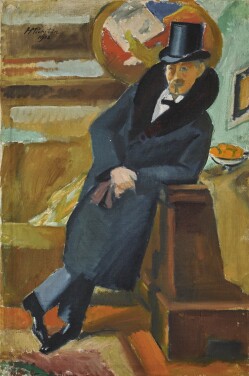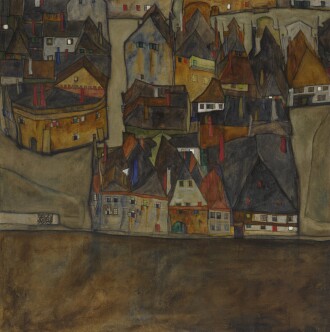Radical Art of the Great War
November 11, 2018 marks 100 years since the Armistice that halted combat and effectively
ended the First World War. As the world pauses to remember this momentous anniversary,
Sotheby’s is honored to present an exhibition of works that illustrate the tremendous and
varied impact of the War on the artistic production of those whose lives it transformed. From the earliest seeds of abstraction through to Dada and le rappel à l’ordre in the aftermath of the War, The Beautiful and Damned offers those artists who defined the Lost Generation a conduit to the present day, to remind us of the humanity of a world at war and the epochal lessons, learned a century ago, that remain as pertinent today as ever. –Julian Dawes
The war is not turning me into a realist – on the contrary: I feel so strongly the meaning which hovers behind the battles, behind every bullet, so that the realism, the materialism disappears completely. Battles, wounds, motions, all appear so mystical, unreal.
Franz Marc in a letter to his wife Maria, September 1914
What happiness there will be when this horrible time is over. What will come afterwards? A great Explosion, I believe, of the purest forces which will also carry us on to brotherhood. And likewise an equally great ß owering of art, which must now remain hidden in dark corners.
Wassily Kandinsky in a letter to Paul Klee, September 1914
Part II: The Beginning of the End is Near
The heaviest burden of all is the presence of the war and the increasing superficiality. It gives me incessantly the impression of a bloody carnival...I am now like the whores, I once painted [in his Berlin-time]: the merest brushstroke now, gone tomorrow. Nonetheless I am still trying to put my thoughts in order and, from all the confusion, create an image of time, which is my task, after all.”
Ernst Kirchner in a letter from the sanatorium in Köningstein, Taunus, Togus, to Gustav Schiefler, 12 November 1916
Part III: Fracture!
What do you think an artist is? ...he is a political being, constantly aware of the heart breaking, passionate, or delightful things that happen in the world, shaping himself completely in their image. Painting is not done to decorate apartments. It is an instrument of war.
Pablo Picasso
Part IV: Weathering the Storm
It will be perceived at some future date, that from 1914 on, all artistic activity falls into two living collective trends, Dadaism and Purism. These two movements, though apparently in opposition to each other, were equally sickened by the glib and stale productions of art, and sought to restore it to health: the former by ridiculing time-worn formulas, the latter by emphasizing the need for discipline.
Amédée Ozenfant





































